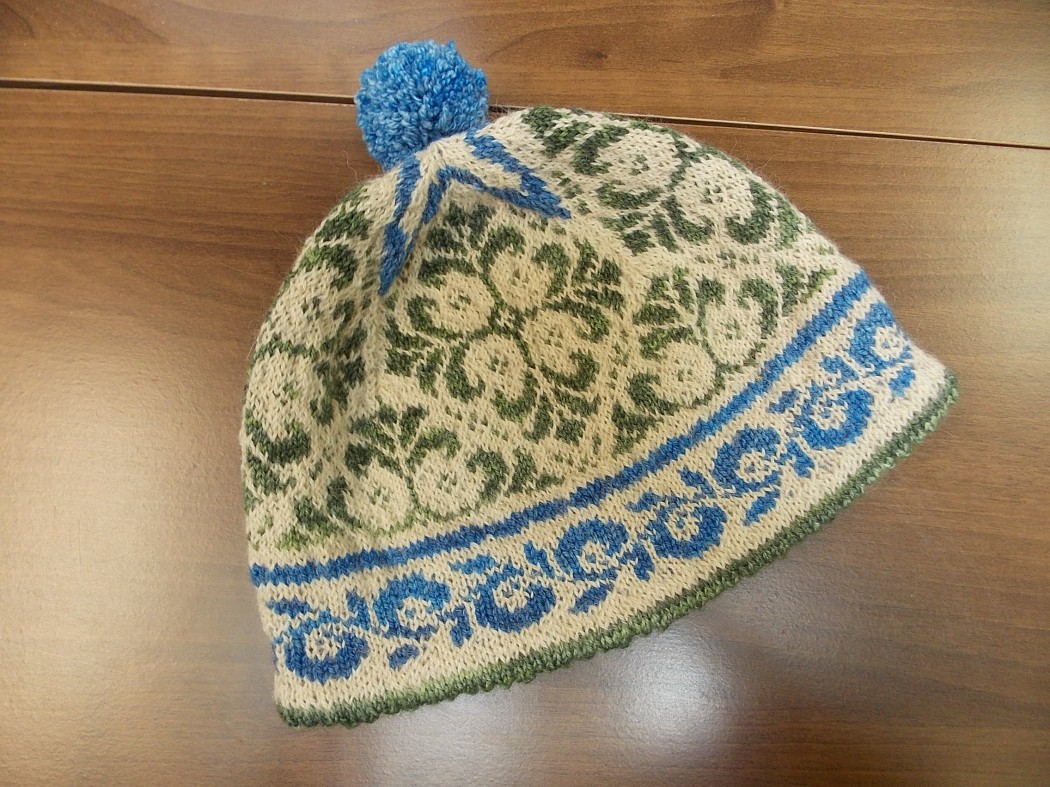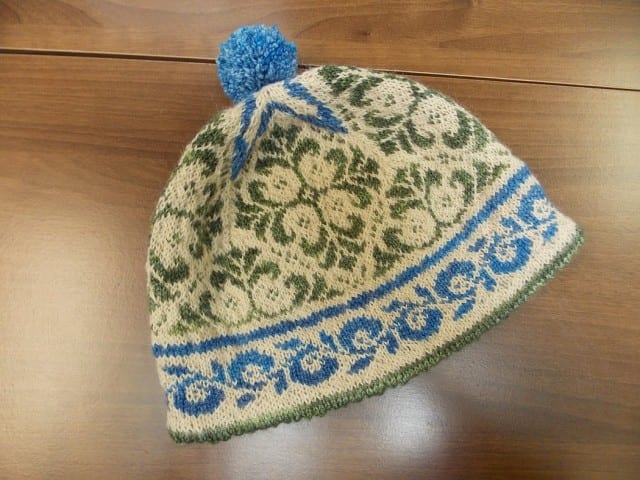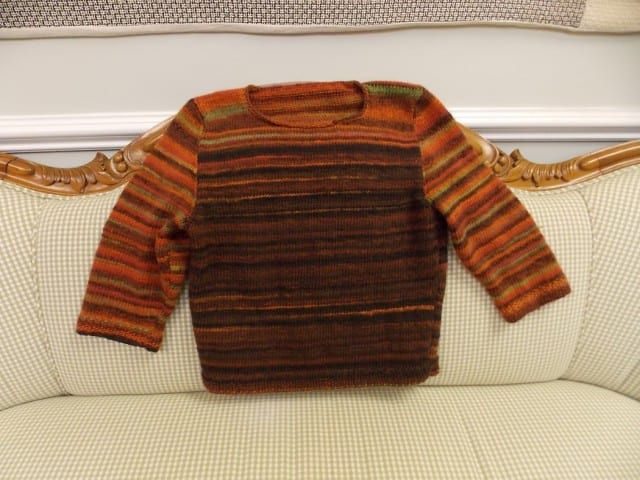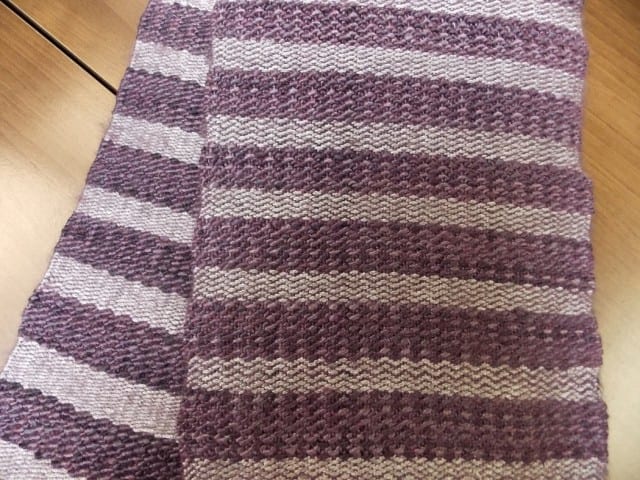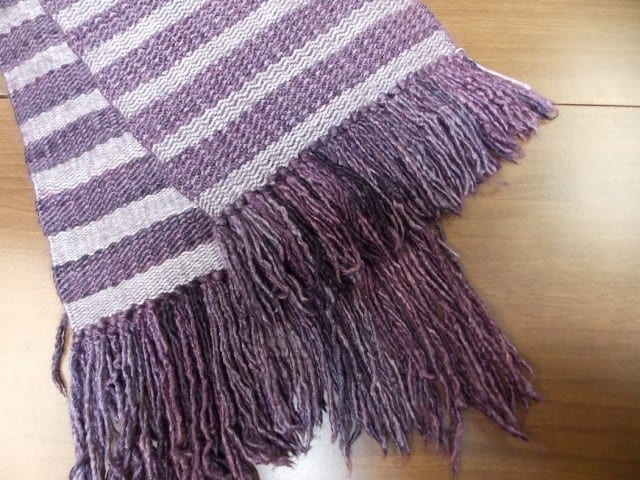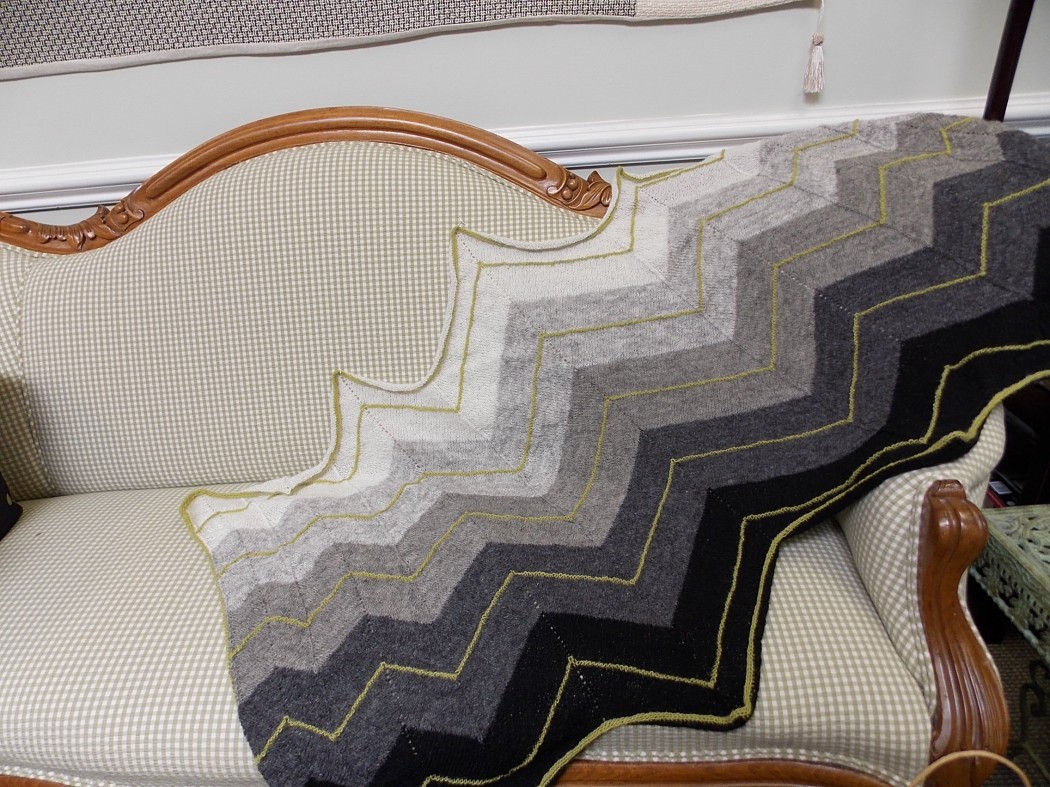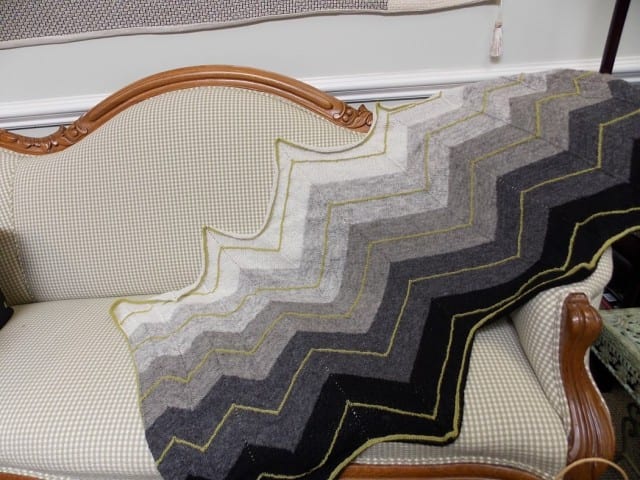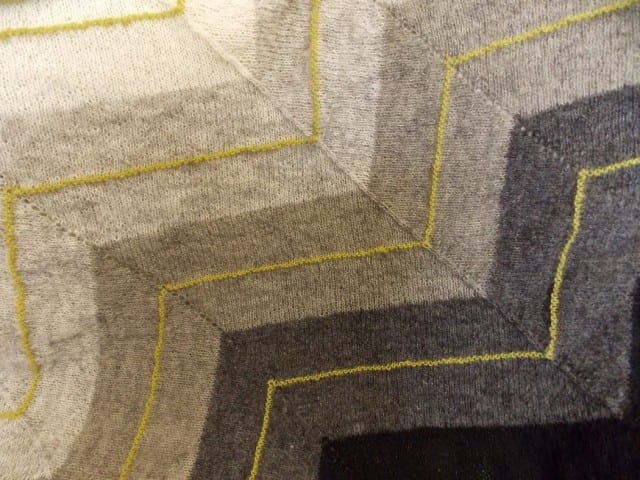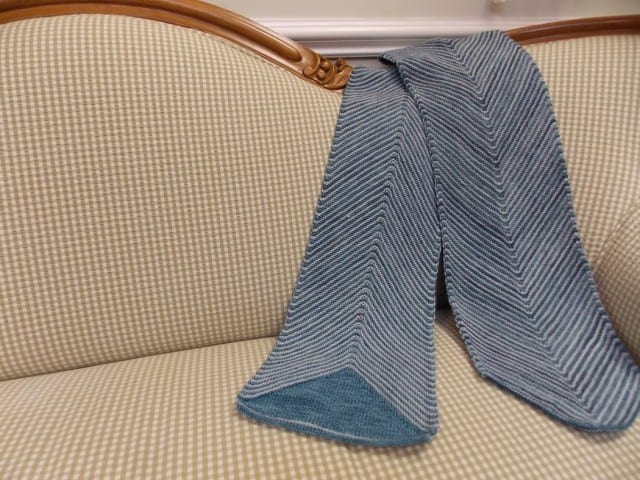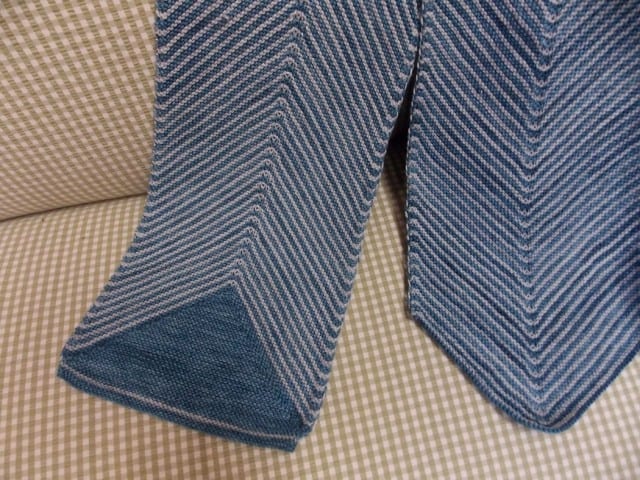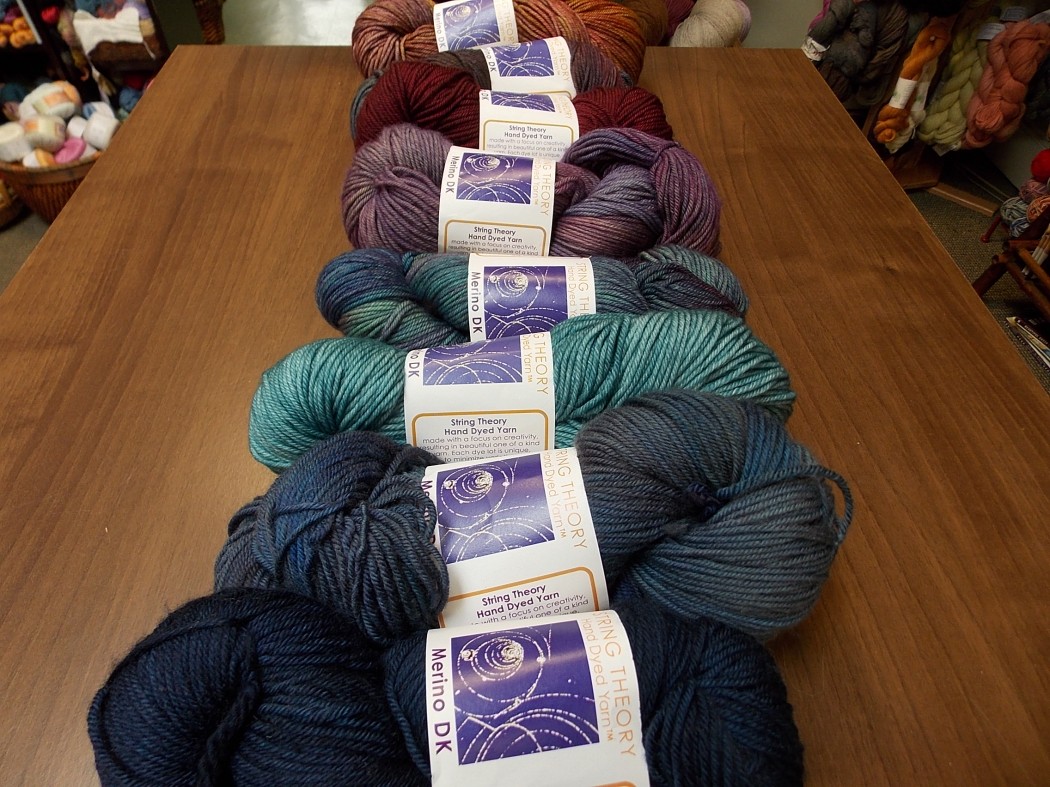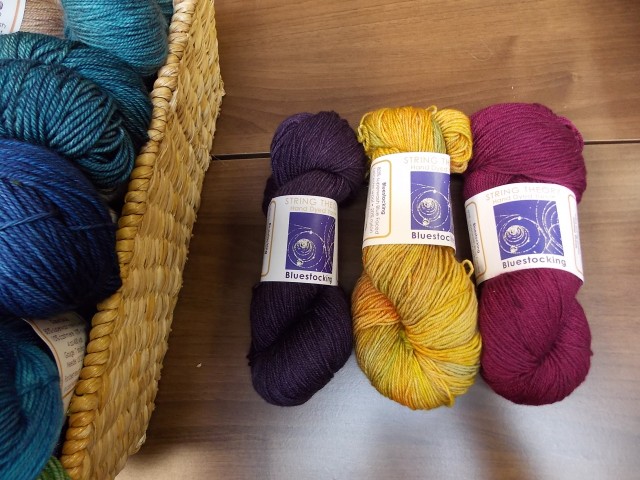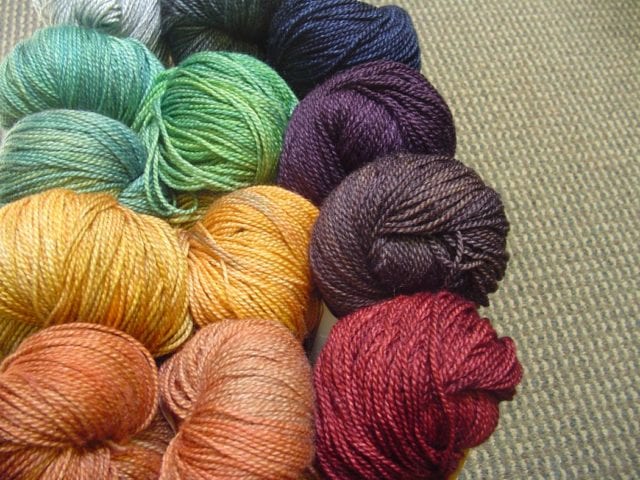Katherine came into the shop a few weeks ago with this beautiful bit of show and tell: a fair isle hat made with her fingering weight leftovers in Isager and String Theory yarns. This is her first attempt at stranded colorwork, a pattern called Edith the Hat. I’m impressed, not only with the color knitting technique, but also with this good use of leftovers. Let not a single precious yard of Alpaca 2 go to waste!
Another knitter brought a recently-completed sweater to show off, made with the last skeins of Berroco Jasper that were left in our sale trunk. There wasn’t enough in one self-striping colorway to make a whole sweater, so she carefully placed two agreeable colorways in different parts of one sweater to a delightful colorblock effect. Resourceful, no?
Victoria treated us to some woven show and tell this past week. Take a look at this incredible scarf, made in Louisa Harding Grace Silk & Wool and Lana Grossa Chiara. We see far more knitting and crocheting than weaving at the shop, so this was particularly exciting. Woven fabric and knitted fabric are so different from one another, and it was great to see how familiar yarns behaved in this unfamiliar-to-me technique. I can’t wait to see the next piece off her loom!
Thanks to all who bring their completed works to the shop to share with us! I look forward to bringing more of it to the blog soon.

